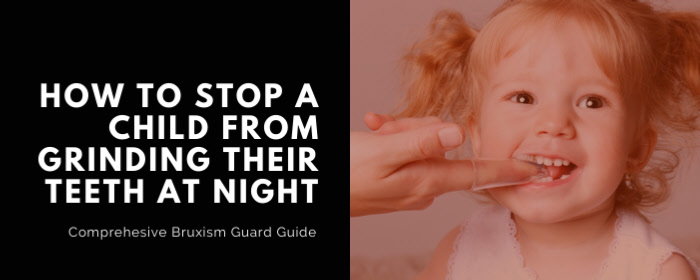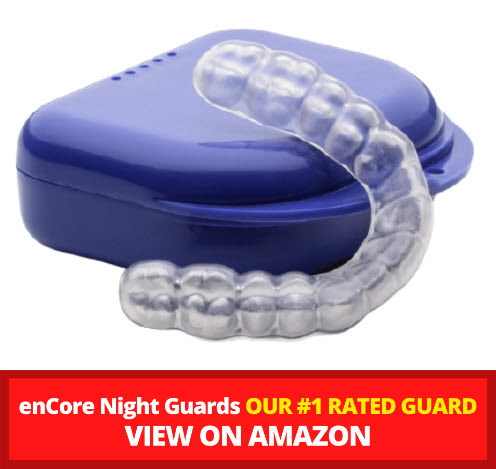
Child bruxism is a common problem. However, many parents are unaware when their children suffer from this dysfunction. Knowing how to identify the condition is important for the child’s oral health. In addition to the risk of losing teeth, bruxism has other consequences that harm the child’s well-being and quality of life.
Want to know more? In this post, we tell you everything you need to know and explain how to stop a child from grinding their teeth at night. At the end of the reading, you will have no more doubts. Read on!
What is child bruxism?
Child Bruxism is the habit of grinding and clenching teeth involuntarily, which can occur throughout the night, during sleep. Until the age of 6, it is common for the child to have this condition. In this phase, many teeth are settling in the gums, and this movement ends up alleviating the discomfort. However, if after this age the problem persists, it is time to seek a specialist to assess the condition.
According to studies by KidsHealth, about 30% of the kids develop the problem. Therefore, Parents should be alert to the first signs of the disorder. Although bruxism does not present a risk to the child’s life, it is a clinical condition that considerably affects the child’s quality of life and sleep, generating a picture of stress and irritation that will compromise his social life, school performance, and his development in general (1).
Symptoms of child bruxism
Bruxism is manifested not only by the grinding of teeth, but also by a number of other signs. During sleep, the child does not feel any discomfort at all. However, after waking up due to the strong compression of the jaws, a child may experience symptoms that are a consequence of an unnatural state. Associated signs of bruxism in children are:
· Feeling very tired
· Headache in the temples
· Soreness in the temples and jaws
· Ringing in the ears.
During a night’s sleep, a child can have many attacks lasting an average of 5-10 seconds. The more frequent and longer the attacks, the more severe the symptoms will be upon awakening.
Treatments for childhood bruxism
The first step is to look for a pediatric dentist to carry out an assessment of the problem. The diagnosis may involve X-rays to detect the degree of wear of the teeth, and if necessary, polysomnography that is done during sleep.
In addition, a regular visit to a dentist is also an excellent way to prevent many diseases, ensuring the oral health of the little ones. Here are some of the ways a dentist may recommend to stop child bruxism.
1. Use of bite plates
To avoid dental wear, the dentist may recommend a bite plate for the little one to use at night. They are great for easing pain and also for preserving joint structures that are deteriorating with aggressive friction between teeth. In addition, bite plates alleviate other symptoms resulting from bruxism, such as frequent headaches, neck and ear pain, which greatly affects the child’s quality of life
Note that the bite is made to measure and is adjusted to the child’s dental arch, so it will not be uncomfortable when using the accessory.
2. Follow-up therapy
In addition to the use of bite plates, it is important that parents investigate the causes of the problem in order to solve it properly.
The onset of bruxism can be related to disorders, such as anxiety, hyperactivity, or prescription of controlled drugs. Therefore, if there is any evidence of emotional disturbance, the help of a psychologist will be essential to help with issues that may affect the child.
If your child has a very busy routine, give him breathing space. This helps relieve tension and facilitates the treatment of bruxism.
Also, a speech therapist can be fundamental in the treatment of child bruxism, with the objective of helping the child to relax and to exercise the facial muscles, avoiding tension in the jaw.
3. Orthodontic treatment
When the causes of bruxism are related to malocclusion and dental misalignment, the child needs to use braces. The time of use depends on the severity of the problem. And only the dentist can give this information after making a complete assessment and ordering the appropriate exams.
There are specific models of braces for children, both mobile and fixed, which help to correct different problems. But only the professional can decide which option is best for the child.
4. Reduce the stimulus
Today, with the excessive use of electronics, such as tablets and cell phones, many children are mentally overwhelmed. Even at night, when the body needs to relax to get a good night’s sleep.
Thus, an important tip is to establish a kind of “sleep hygiene” a few hours before the baby goes to sleep. A hot bath, a good story, or even the use of aromatherapy techniques are excellent options to relax your child and avoid restless nights that can be a “trigger” for bruxism.
Is child bruxism curable?
When you suspect or discover that your child has bruxism, there is no need for despair. Although the disorder still does not have a definitive cure, several very effective treatment options make the problem almost imperceptible and offer much relief to symptoms.
As explained above, the first step is to seek a dentist’s diagnosis, and if necessary, that of other professionals, such as psychologists, to assess the source of the problem and manage it as soon as possible. This will help to avoid further disorders in the future.
Conclusion
As you saw, the treatment for child bruxism is not so complex. However, it is important to identify the cause to propose the best solution. It is worth mentioning that it is important to pay attention to your child’s oral hygiene. If your child is still too young, buy toothpaste for children to encourage brushing, as these products have a more pleasant taste. Lastly, it is important to remind the child that he can always speak and express his discomfort, in order to find a solution to the problem that arises.


